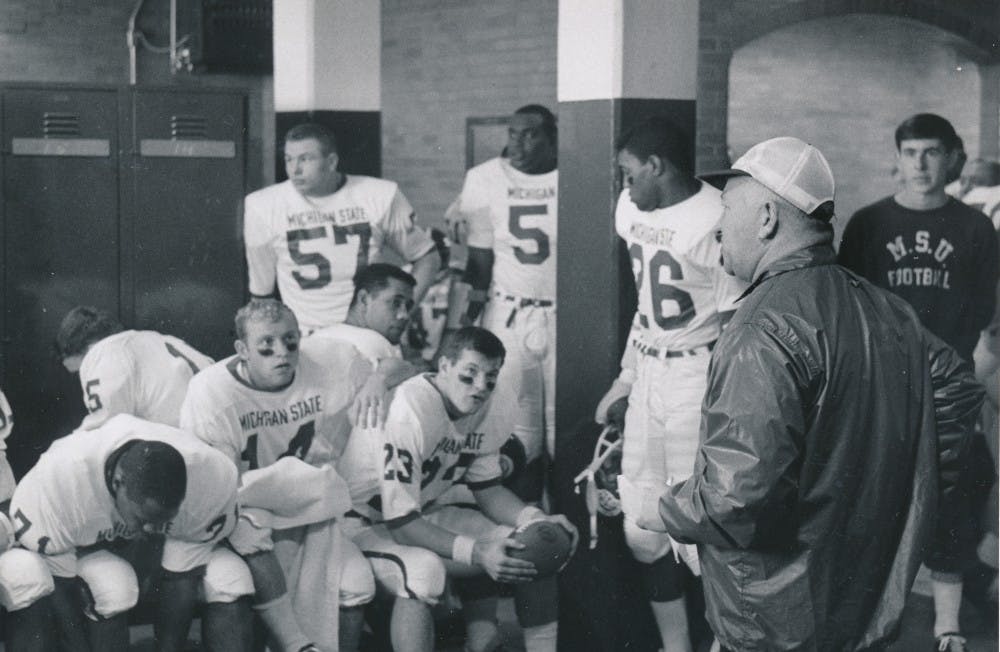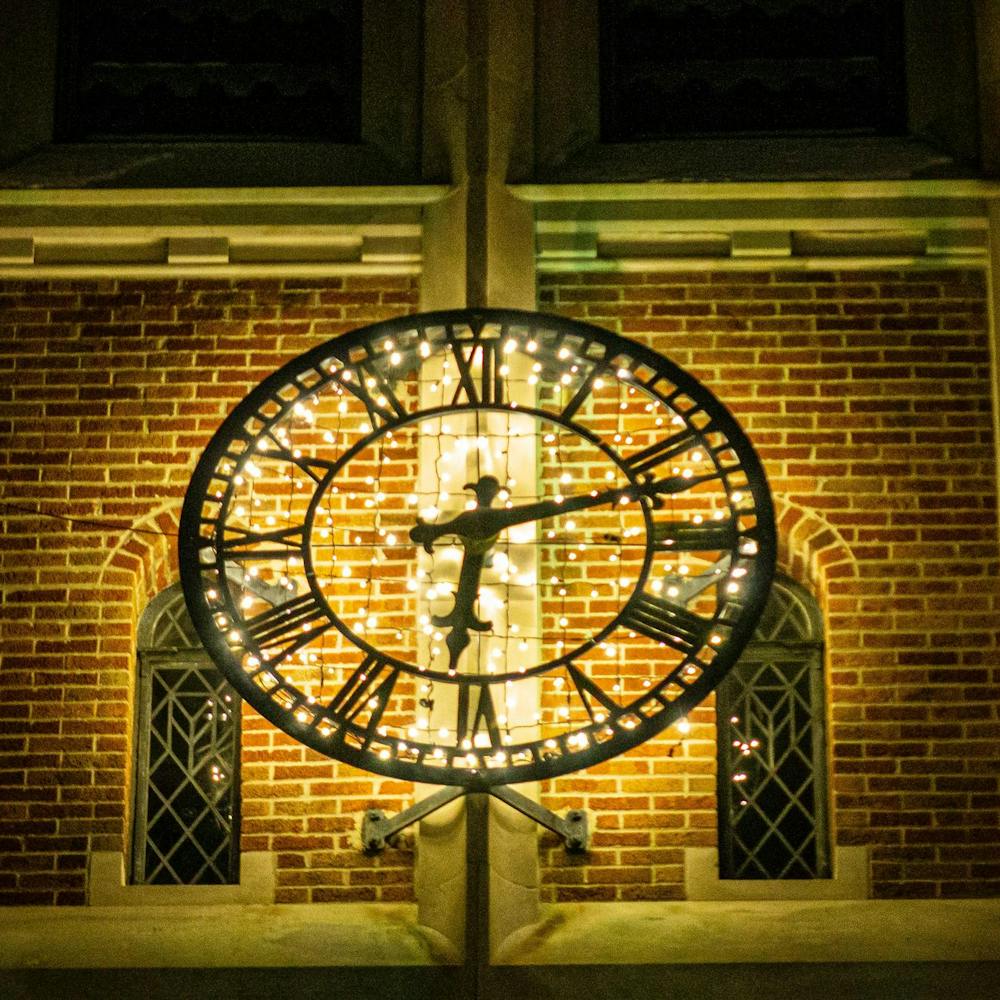When Martin Luther King Jr. came to East Lansing on Feb. 11, 1965 and introduced a new government-sponsored student education program, the sports landscape was going through new changes as well. Clinton Jones was in his sophomore year at MSU, primed to take over as the lead running back for the Spartans.
For that time period, having a starting running back who was black was unusual, but former head football coach Duffy Daugherty and the MSU football program had a different plan, as Tom Shanahan explained in his book, “Raye of Light.”
Daugherty recruited 44 black athletes to MSU from the segregated south from 1959 to 1972. Twenty black athletes were on the roster when MSU won the national championship in 1966.
“Racism is something that has had a tremendous impact on my life, beginning when I was a child growing up in Cleveland, Ohio,” Jones said. “And being at Michigan State was like an oasis from the ugly struggle for survival in the city.”
Despite his childhood and early teenage troubles with racism, Jones found ways to combat it. He joined the Caritas organization his senior year of high school in 1963, an organization that was devoted to bringing about dialogue between the black and white communities, and reach a common ground through that dialogue.
In a sense, that’s what King wanted with his new program, otherwise known as STEP. The program was evolved primarily because of MSU students’ desire to help others gain educational experience.
MSU football had the same idea, but executed through athletic experience, and the education at MSU was a bonus for the athletes.
As for Jones, his description of MSU as an “oasis” during that time period is high praise. Jones said he knew a few athletes and friends who experienced racial tension and caucasian condescension in his time, but the Mr. MSU competition his sophomore year gave some insight on why the racial tension toward athletes was so low on MSU’s campus.
“I personally never had anybody call me out of my name during my whole time at Michigan State,” Jones said. “I believe because our dormitory was so integrated, and most of these students from the south had never had a relationship with white people, so when they came we were integrated, living with each other. All my roommates were white, and we got along very good.”
Jones is arguably one of the greatest football players to dress in a Spartan uniform. But there was one other black student athlete who was starting to turn heads, and he happened to be Jones’ fraternity brother and one of the stars of MSU basketball.
Now, being one of the stars of the MSU basketball team during the 1964-65 season didn’t seem like a big accomplishment.
The Spartans finished 5-18, 1-13 in the Big Ten that season, the last under head coach Forddy Anderson.
John Benington took over, and while the football team was celebrating a national championship, MSU basketball and big man Stanley Washington were enjoying a newfound success, finishing the 1965-66 season at 15-7, second place in the Big Ten after finishing dead last the year prior.
“He’s an outstanding, not only an outstanding basketball player, but just an outstanding human being,” Jones said. “He had phenomenal athletic ability on the basketball court, and he had a very magnanimous personality.”
Jones and Washington were two athletes who solidified their place in MSU sports history through their play and perseverance.
They were some of the first successful black athletes at MSU, playing in a time period when desegregation was still becoming accepted.
So as Jones explained, the integration of the sports teams played a major factor in the acceptance of their race on campus.
“I think because our team was so integrated, unusually integrated for that time, even for a university in the north, and because the presence of black students who were really making an impact in the sports world, it was something that raised the whole life condition of the student body,” Jones said.
Jones and the other members won back-to-back championships in 1965 and 1966, and the whole campus was behind the Spartans football team. Jones might have seen MSU as an oasis for him, but to others, he helped create the oasis.
“When you are winning, it’s kind of like magnetism,” Jones said. “It’s something that brings people together.”







